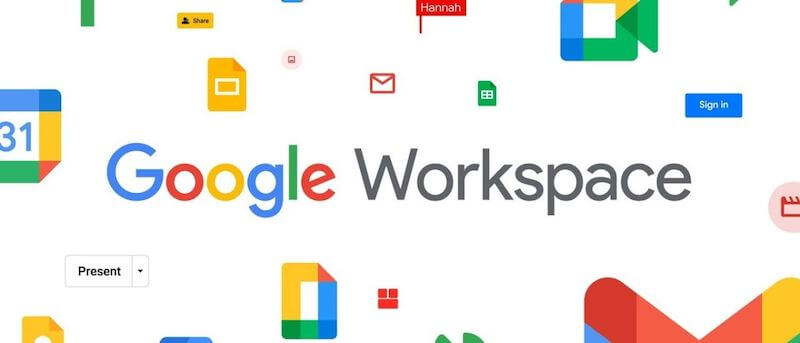Google Workspace is a set of various products that Google provides to its users on a commercial basis. Plenty of different products and services are considered a part of the Google Workspace package, including Gmail, Calendar, Chat, Drive, Meet, Docs Editors, Currents, Contacts, and Classroom (an exclusive of the education edition).
Most of these products are available to everyone for free, for every single Google account out there. However, some features are exclusive to Google Workspace subscriptions, such as a variety of administrative settings, no limitation on Google Drive storage capacity, custom domains, and extensive customer support, among others.
Google Workspace accounts are not used for any advertising purposes at all and do not have ads in any of its applications. These accounts can also fine-tune some of the more specific security and privacy settings. However, these services have one significant issue that is rather important, and yet Google does not have any solution to it in-house – the problem of data restoration.
Google Workspace as a platform is secure in and of itself, but it lacks any feature that lets companies and businesses restore data if it was somehow lost or corrupted. There could be many reasons for a data loss event – such as a common synchronization error, a malware attack, an insider threat, or a basic human error.
This is where Google Workspace backup solutions come in – presenting a third-party solution to the problem of data restoration by creating an automated backup loop with all of the data circulating inside your Google Workspace applications. The overall backup solution market is quite vast already, and plenty of different solutions offer Google Workspace backup capabilities in some way or another.
It is also possible to segregate these solutions into smaller groups based on specific factors. For example, Google Workspace backup solutions can work as separate cloud services and be self-hosted. Alternatively, while there are backup solutions that were built with Google Workspace data in mind first and foremost, there are also plenty of more prominent, more versatile solutions that have Google Workspace backup capabilities as one of their many features in a single package.
The significance of this particular problem is rather tricky to underplay since Google Workspace has a specific paragraph in their ToS (Terms of Service) stating that they are not responsible for any business damage that data losses within Google Workspace or resulting profit losses may cause. There is even a recommendation from Google itself to use third-party backup solutions to cover your own Workspace data with an additional layer of security in the form of a backup solution.
We can also go over some of the more specific reasons why Google Workspace backup is highly recommended, if not necessary, for all of its users. For example, Google’s data protection tools are rather lackluster – this includes both Google Vault and Google Takeout.
Google Vault is a data archival tool that is helpful to IT administrators when there is a need to retain or export a copy of existing information. That said, Google Vault is not creating a separate copy of your data. Still, it only mirrors it – meaning that all of the data from Google Vault would immediately disappear the moment the original data copy is gone from Google Drive storage.
Google Takeout, on the other hand, is a relatively simple data exporting tool with one single purpose – downloading data from Google applications. Unfortunately, it cannot work with shared folders and has a limitation of 50 Gb for a single download, making it less than ideal for backup purposes.
There is also the ever-present fear of a SaaS service going offline for one reason or another. Granted, Google’s track record in this regard is rather impressive, but no one is entirely safe from some outage or a server going offline, making the entirety of your Workspace data inaccessible if there was no backup solution in place beforehand.
Data migrations are also something that plenty of companies deal with regularly. In this context, exporting data directly from Google Workspace and importing it to another system or solution is a lot more inconvenient than using your backed-up data to do the same.
Ransomware is one of the more significant reasons why there is so much pressure on using backup solutions in the first place – the popularity and the ingenuity of different types of ransomware are both the reasons why they are this big of a problem. If ransomware can encrypt the entirety of your Google Workspace data and you do not have a backup system in place – getting your information back becomes several times more problematic than it could have been if there was a backup system.
Even something as simple as data synchronization could be abused by ransomware, making it so that the affected files on your desktop would also be synchronized with the data in the cloud service, making the entirety of your data infected immediately. As such, Google Workspace backups are highly recommended for all Workspace users for the sake of security and data continuity, among other reasons.




